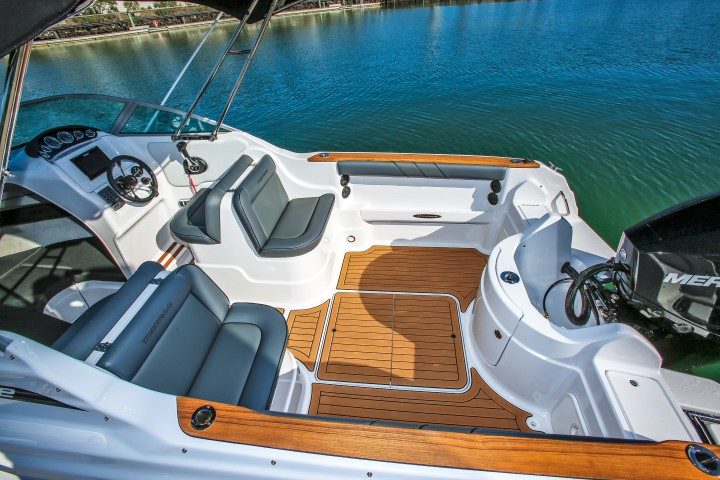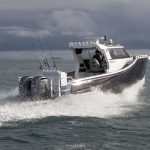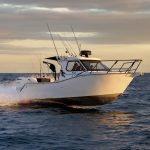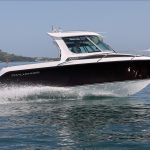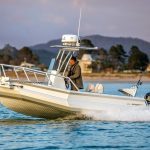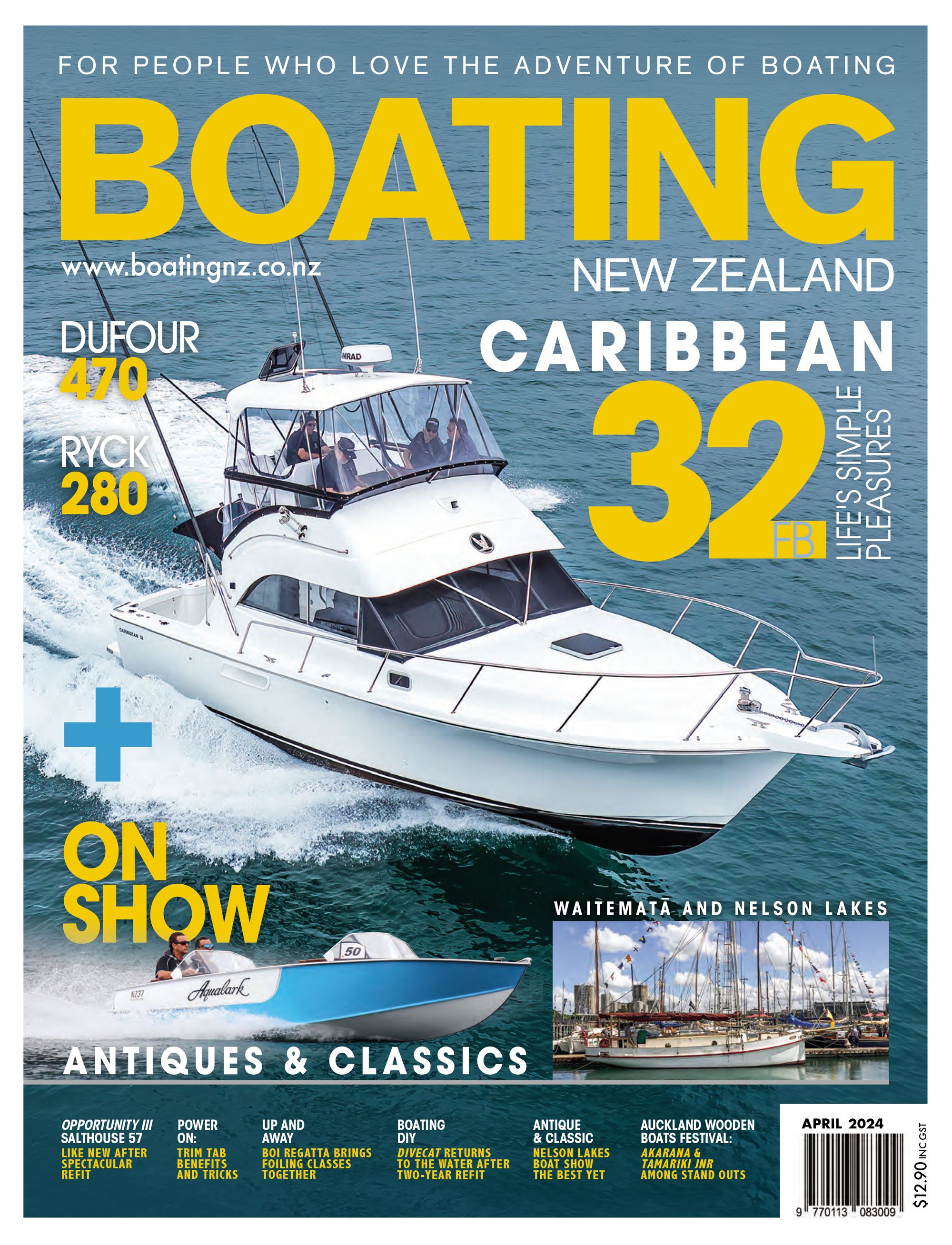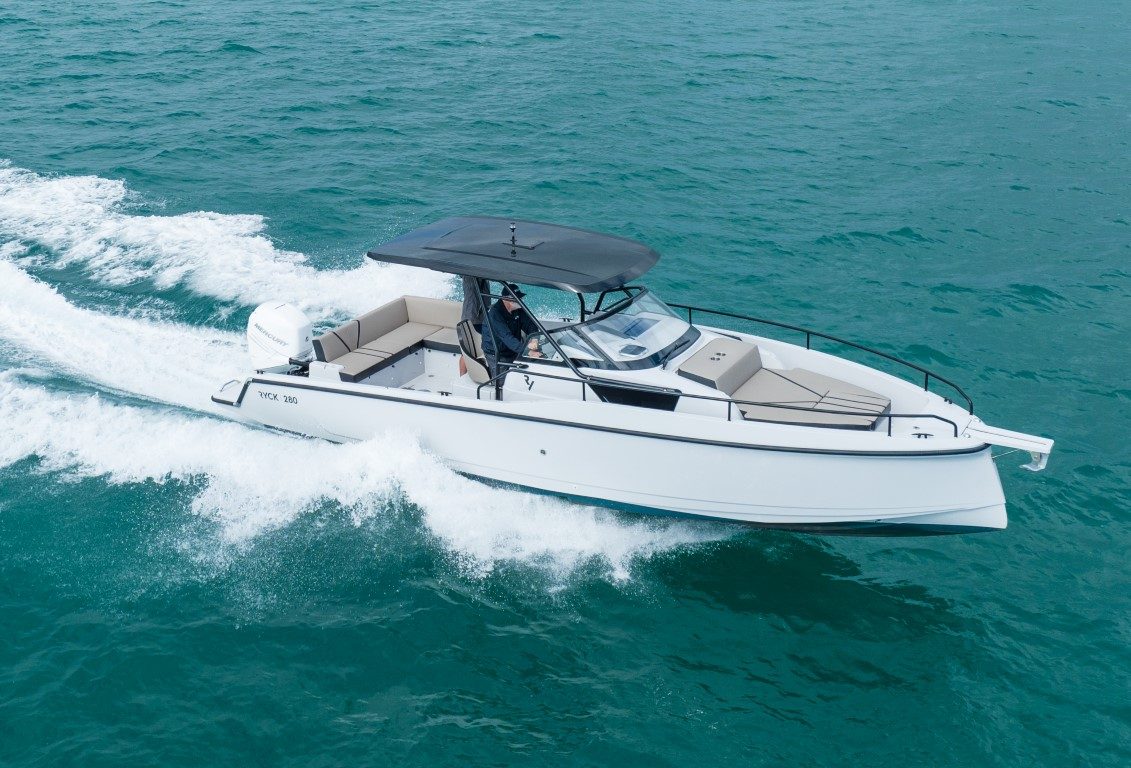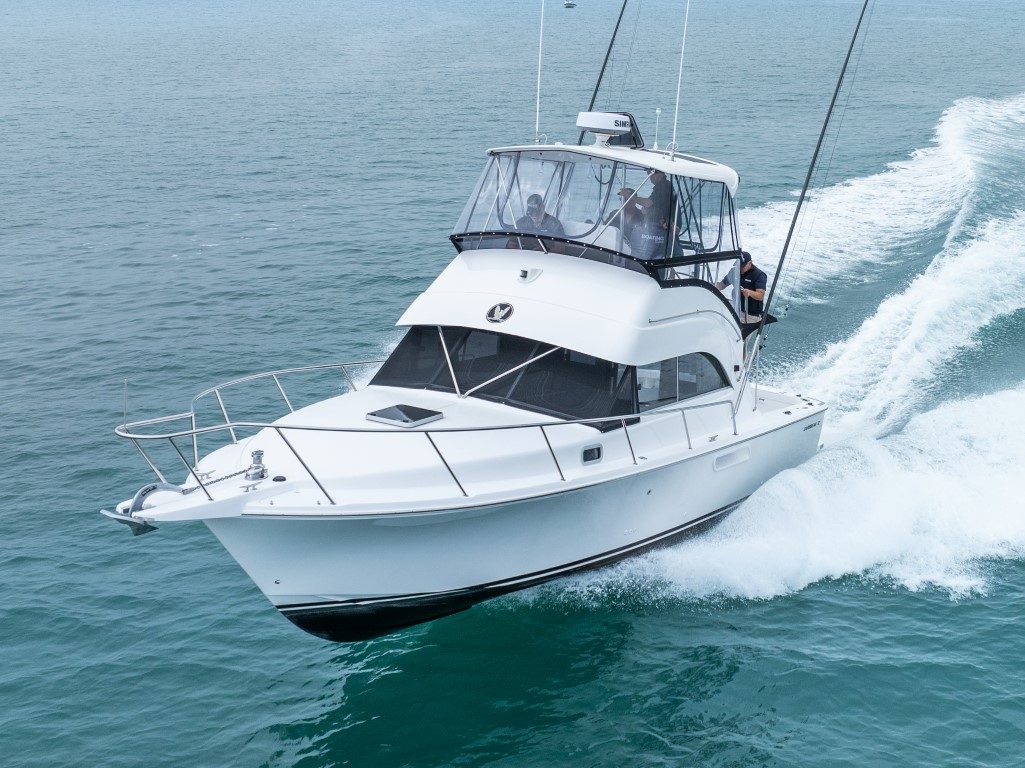She feels really easy and comfortable to sail, even in a good breeze and a chop.
- Rides and handles like a much bigger boat
- instant throttle response and excellent control
- Punchy V6 Mercury a great match for the 641 hul
- Fit and finish to Tristram Marine’s usual high standar





